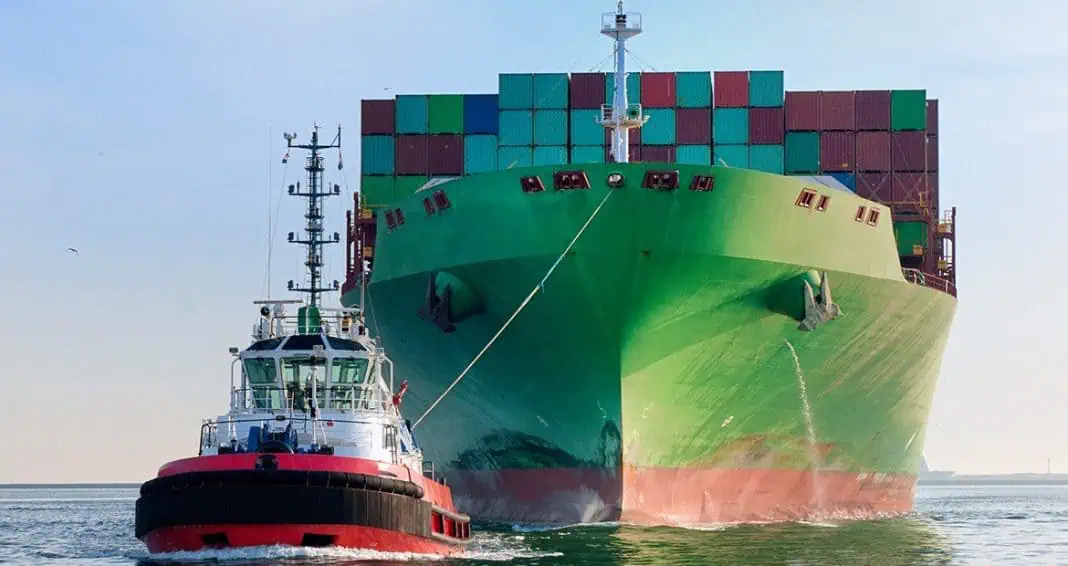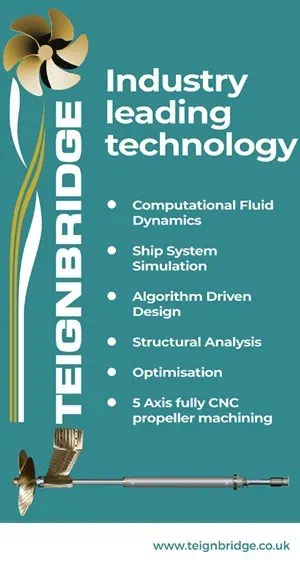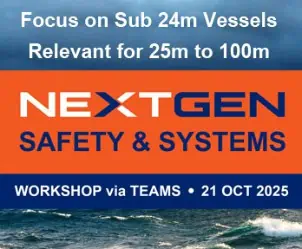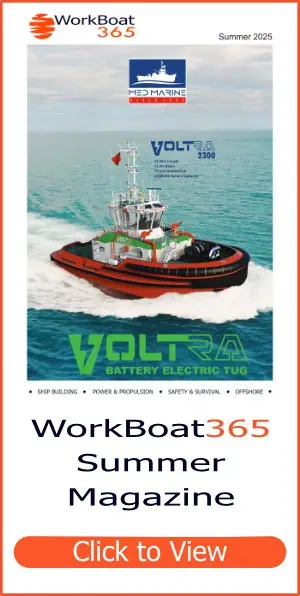By Aytek Yuksel, Content Marketing Leader – Power Systems, Cummins Inc
Most items we use daily have been made possible thanks to the marine industry. Seaborne trade and shipping are the corner stones of our modern society. The growth in seaborne trade has outpaced the growth in the world’s population over the last decade. Moreover, seaborne trade volume is forecasted to be aligned with the growth in GDP in the next decade.
“Increasing trade activity doesn’t just impact large freight vessels. Many other ships also benefit from this, including tugs, push boats, barges and vessels that ply the inland waterways and rivers,” says Eddie Brown, Director of Marine Business Development at Cummins Inc. “Even the passenger vessels benefit as increasing trade means more jobs and more commuters. Increasing trade also translates into increasing wealth; more tourists interested in whale watching or families looking for a recreational boat,” adds Brown.
This increased activity in the maritime industry brings up the need to reduce ships’ environmental impact. Over the years, the marine industry’s focus on reducing environmental impact has broadened from nitrous oxides and sulfur to greenhouse gases and carbon. Let’s start with some of the emission basics most relevant to the marine industry.
Meanwhile, if you are interested in regulations behind these emissions, check out engine emission regulations for marine applications.
Glossary of engine emission terms for the marine industry
NOx (Nitrous oxides)
Nitrous oxides are a group of highly reactive gases that are formed when the fuel is burned (especially at high temperatures) during combustion. Road transportation and energy production within power plants are the top two sources of nitrous oxides generated by humans. Meanwhile, many of the vessels with internal combustion engines also emit nitrous oxides at varying levels.
SOx (Sulfur oxides)
Sulfur oxides are bad smelling and toxic gases. They include sulfur dioxide (SO2) and other groups of molecules made of sulfur and oxygen atoms. Sulfur oxides are generated during the combustion of fossil fuels. Energy production and energy use in the industry are the two primary sources of sulfur oxides generated by humans. Meanwhile, many of the vessels with internal combustion engines also emit low levels of sulfur oxides.
CO2 (Carbon dioxide)
Carbon dioxide is a greenhouse gas (GHG). It is produced by both natural processes, such as volcanic eruptions, and human activities. It is often considered as the primary GHG emitted through human activities. Humankind uses the combustion of fossil fuels for transportation, electricity generation, industrial processes and beyond. For marine applications, internal combustion engines used in vessels is one of the sources of CO2 generation.
Greenhouse gases (GHG)
Gases that contribute towards trapping heat within the atmosphere are called greenhouse gases. The name greenhouse comes from the greenhouse facilities. These facilities trap the heat necessary for the growth of plants inside; hence the name for greenhouse gases. There are four primary greenhouse gases: carbon dioxide (CO2), methane (CH4), nitrous oxide (N2O) and fluorinated gases.
If interested, read greenhouse gases to carbon neutrality and carbon negativity; an overview of popular emission terms to learn more.
Why have NOx and SOx reduction been the focus among marine applications?
Both nitrous oxides and sulfur oxides are harmful to human, animal and plant health. For humans, exposure to these particles could cause respiratory issues. For the environment, nitrous oxides and sulfur oxides could contribute to acid rains. Acid rains impact life on land and air, but its most clearly seen impacts are in aquatic environments. These include streams, lakes, and marshes where acid rains negatively impact fish and other wildlife.
The initial MARPOL Annex VI limited the sulfur content of the fuel to 3.5%. It has also limited the emission of nitrous oxides to 17 g/kWh for ships with engine’s rated speeds of 130 rpm or less. The nitrous oxide emission was limited to 9.8 g/kWh for ships with engine’s rated speeds of 2,000 rpm or more.
It is important to note that the International Maritime Organization (IMO) regulations also specifically limit the sulfur content of the fuel used in the engine. This focus on fuel is in addition to regulating the engine exhaust emissions.
IMO’s Tier II and Tier III Emission Regulations
After MARPOL Annex VI, the IMO has continued to set regulations with reduced emission objectives. Each subsequent regulation (IMO Tier II and Tier III) continued to lower nitrous oxide and sulfur oxide emissions.
As a result of these regulations, today ships emit 80% less nitrous oxides and 89% less sulfur oxides compared to their counterparts built in the 1990s.
You can learn more about the Cummins IMO Tier III Solution, and see the technologies available to you to fulfill the needs of your business.
Why the new focus on reducing GHG emissions among marine applications?
The original MARPOL Annex VI, introduced in 2000, didn’t limit the emission of all GHGs. The regulation limited the emission of specific GHG such as nitrous oxides and prohibited the deliberate emission of specific GHG such as chlorofluorocarbons.
Meanwhile, the emission of greenhouse gases from shipping exceeded one billion tons a year in 2018, according to Fourth Greenhouse Gas Study (2020). While this only constitutes 2.9% of global emissions, it is still large enough to be addressed.
For the IMO specifically, energy efficiency indices are built to drive increased reduction in GHG emissions.
The IMO’s Energy Efficiency Design Index and Ship Energy Efficiency Plan
The IMO has chosen to adopt an energy efficiency focused approach in controlling GHG emission of ships. For this purpose, the following measures were introduced.
- The Energy Efficiency Design Index (EEDI) is focused on new ships. According to EEDI, the new ships are required to comply with energy efficiency performance levels.
- The Ship Energy Efficiency Plan (SEEMP) is focused on new and existing ships. It lays out a plan for shipowners to improve the energy efficiency of their new and existing ships.
- The attained Energy Efficiency Existing Ship Index (EEXI) shows the energy efficiency of the ship compared to a baseline. Ships need to meet a reduction factor relative to their EEDI baseline.
Currently, these measures are applicable for larger ships, above 400 gross tonnage. Some of the ships that are in this category include passenger liners, oil tankers, cargo ships, larger supply vessels and larger ferries. Meanwhile, it is likely these measures will drive emission reductions for smaller ships too.
Greenhouse gas reduction vision for marine industry
Going forward the marine industry has an ambitious goal set for reducing its environmental impact. The IMO’s vision includes reducing international shipping’s CO2 intensity (CO2 emissions per transport work) by at least 40% by 2030, and towards 70% by 2050. It also includes reducing GHG emissions from international shipping by at least 50% by 2050, compared to 2008 levels 2. While these goals are tailored for international shipping, it is very likely the other marine applications will also experience similar reductions in their emissions.
Many technologies ranging from energy storage and fuel cells to internal combustion engines will play a role to reach this vision. Cummins Inc. has a strong marine heritage dating back to the company’s start in 1919. Today, Cummins partners with many vessel builders and designers to find the right marine power system technologies and solutions.
To learn more about marine power solutions Cummins offers, visit our webpage.











